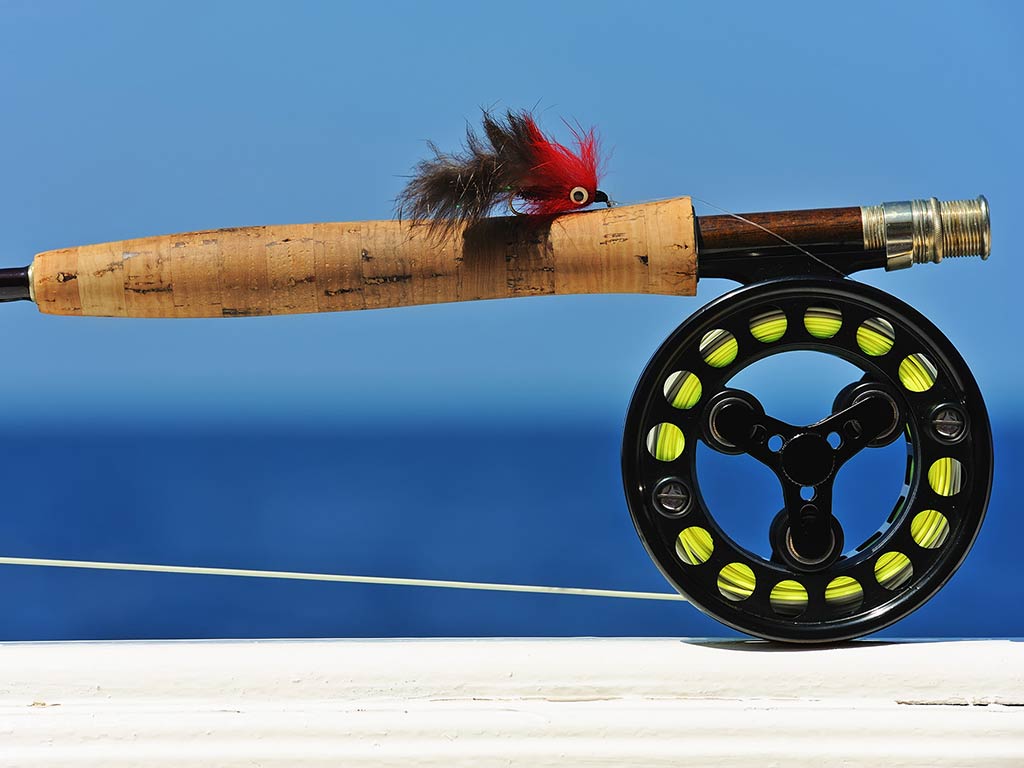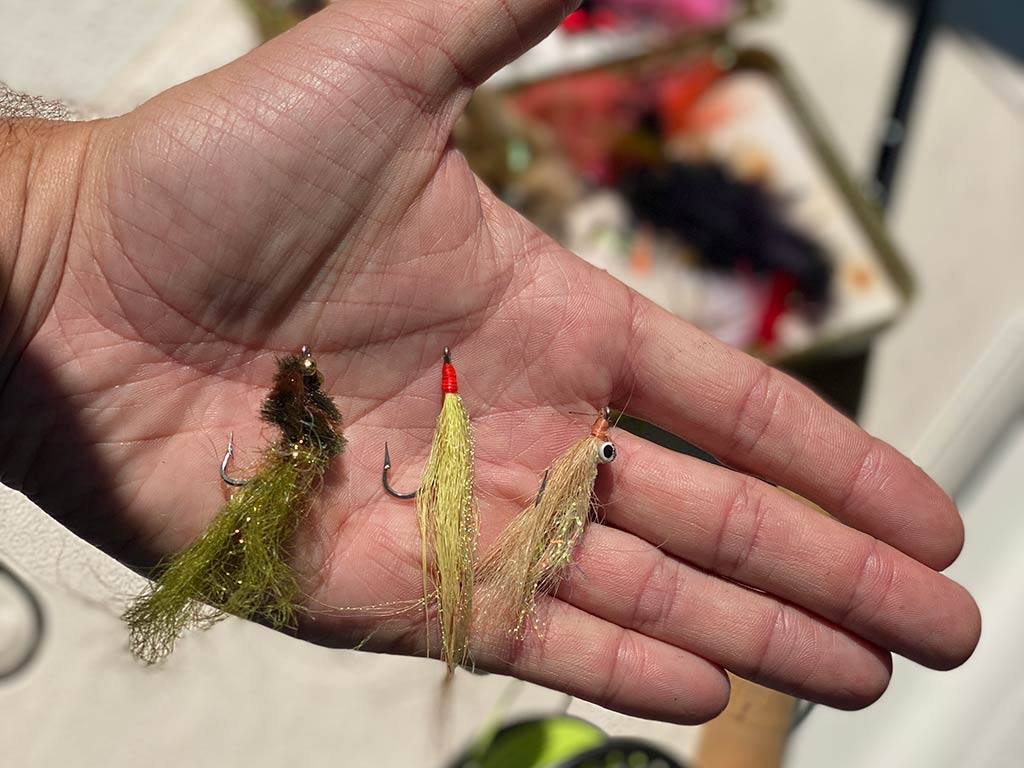Fly fishing takes some serious skill, so it may not be for everyone. It requires a mix of dedication, patience, and the ability to learn and practice new skills. Some may call it “extremely challenging” but the truth is, it sounds harder than it is.

A lot of anglers in Florida anglers fell in love with fly fishing and developed a huge passion for it because of the challenge it presents. Aficionados of fly fishing in Florida say the rewarding feeling of catching a fish on the fly is like no other. If you’re skeptical about fly fishing, read more to discover some of the tips, techniques, and incentives that fly fishing provides.
Fly fishing: What is it?
Well, it’s fishing of course, just in a different form. Fly fishing essentially uses ultra-light lures – known as flies – for the purpose of imitating insects. Fly fishing focuses on catching fish that will hit smaller sources of food, insects being the prime example. However, insects aren’t the only species you can imitate. There are flies that resemble shrimp, frogs, small bait fish, and more. Some people even make their own flies from scratch.

Fly fishing uses specialized setups that have heavier, thicker lines in order to cast the very light-weighted lures far. This goes for the rod and reel as well, as there’s a good balance in weight. You can also try out multiple lines as well to ensure a reliable line setup. Just like in traditional fishing, you have your backing, then a braided line, and then an additional leader attaching to the hook. It just looks a little different for fly fishing.
The biggest difference between fly fishing and traditional fishing is the method of casting. If you’ve ever come across a fly fisherman before, you’ve probably seen them doing a “whip-like” maneuver as they wave their rod back and forth to create momentum. It’s also essential to pull on the line to increase bending on the rod. The purpose of this is to increase the distance the line is reaching, to determine where the fly will land.
A lot of fly fishermen usually sight cast. Therefore, once they see a fish in the water, they start to wind up their line and begin with that backward motion. But you don’t have to sight cast in order to fly fish. You can just throw around your fly hoping for some luck, although it may take a good amount of energy.
If using a boat, a lot of fly fishermen use a platform to stand on in order to get a better view of what’s in the surrounding waters. You can also use push poles to quietly maneuver around the water.
What species can you catch fly fishing in Florida?
Saltwater

The most popular saltwater species you can catch when fly fishing in Florida include Tarpon, Bonefish, Snook, Redfish, Permit, and Spotted Seatrout. The most prized game fish for fly fishing anglers is probably Tarpon. That’s because of their strong fights, acrobatic jumps, and high-energy runs. These fish are wanted by all types of anglers. However, it’s more intense for fly fishing.
Freshwater

Common freshwater species for fly anglers in Florida include Largemouth Bass, Peacock Bass, Gar, Mayan Cichlids, Oscars, Channel Catfish, and more. The freshwater bite may be a bit smaller than in saltwater, but the excitement is still just as strong.
Top Fly Fishing Spots in Florida
Saltwater

Popular fishing destinations in Florida that provide great opportunities for fly fishermen include the Ten Thousand Islands, Marco Island, the Everglades, the Florida Keys, Miami (especially Biscayne Bay), Tampa Bay, Jacksonville, and Crystal River. All these locations provide great environments for plenty of game fish that fly fishermen love. These booming habitats contain numerous species and bait fish roaming the areas creating very lively environments.
To maximize your chances, you want to visit areas such as mangrove shorelines, flats (grassy or sandy), docks, bridges, oyster bars, and beaches. Here, you’ll have plenty of chances at finding some nice fish. Be sure to give yourself plenty of space to cast your line back and forth.
If casting from a boat, you should ensure a good distance between the spot you want your fly to land at and the boat. If you’re on land – perhaps fishing at a beach or pier – be sure there are no people around that could get hit by your line.
Freshwater

Some great locations to go fly fishing in freshwater in Florida are Lake Kissimmee, Lake Okeechobee, Lake Trafford, Tamiami Canal. But there are plenty others. Florida has endless ponds, lakes, rivers, and canals carrying loads of hungry species.
You’re sure to find plenty of places to practice your fly fishing skills. Once again, find a spot that has easy access, not a whole lot surrounding you, and plenty of room to cast without worrying about approaching pedestrians.
Common Fly Fishing Setups
Saltwater

As most people know, saltwater fish are bigger and stronger than most freshwater species. That means you’ll want a reliable, tough setup. An example of a strong, reliable saltwater setup includes an 8 wt rod, a 7/0–8/0 reel, 150 yards of 20 lb Dacron (which is a heavier braided line), and some 8–9 weight fly fishing line. Add a wet fly and you have your saltwater fly fishing setup!
Freshwater
A common freshwater fly fishing setup for Florida starts with a 5 wt rod. Add 8–12 lb taper and some 3–4 weighted fly fishing line, and throw on a dry or wet fly at the end. You can choose your fly depending on the environment you’re fishing in. More on that in the next section…
Common Fly Fishing Lures
Saltwater

You should choose which fly to use depending on the water you’re fishing in. For example, if you’re in an area with deeper waters and nothing floating around the surface, a fly that sits on the bottom is a good option. These are known as wet flies. Wet flies popular for saltwater fly fishing are the Avalon Shrimp, Turneffe Crab, Crazy Charlie, and others.
If the area contains shallower water or plants on the surface, and you see a lot of near-surface action, use a dry fly. These stay on the water surface. These flies will provide more excitement as you’ll have some topwater action where the fish will come out of the water to eat your bait. A couple of examples of saltwater dry flies are the Clouser Minnows, Lefty’s Deceiver, and Grassett’s Snook Minnow.
Freshwater
Wet flies are best used in open, deeper waters, such as the middle of a lake. A couple examples of wet flies used for freshwater are the Wooly Bugger, Copper John, Zebra Midge, and the Prince Nymph.
You can use dry flies in shallower, more covered waters, such as ponds containing lots of lily pads or other surface plants. Examples of freshwater dry flies include Mayfly, Blue Winged Olive, Griffith’s Gnat, and more.
When to Go Fly Fishing in Florida
Saltwater

Saltwater fly fishing in Florida provides plenty of opportunities to catch some nice fish whether during the day or night. In the daytime, you can stroll by grassy or sandy flats, mangrove shorelines, and along oyster beds. You may find schools of Snook, Redfish, Tarpon, Bonefish, and Trout, depending on the area or season. Earlier in the morning or late in the evening provide the best chances of finding these guys. That’s because there isn’t too much sun, so they’ll be active and hungry.
Night fly fishing in Florida is just as fun – maybe even more. Stick around docks and bridges with eye-catching lights, and you may just land that trophy fish!
The best time of year to go saltwater fly fishing in Florida really depends on what species you are targeting. The summer months bring out the warmer temperatures and is peak season for species such as Tarpon, Permit, and Snook. Meanwhile, the cooler months bring out Redfish, Pompano, and more.
For both saltwater and freshwater, calmer conditions will be best for fly fishing.
Freshwater

Freshwater fly fishing in Florida is also typically at its best when you fish in the mornings or evenings. However, you’ll also want overcast days. The fish will come out a bit more when the sun isn’t shining down intensely on them and will roam around looking for something to eat. You’ll find that during dusk and dawn, topwater flies work, providing some good results and exciting thumps.
Once again, seasonal preferences for species vary, so there may not be a specific “perfect time of year” to go freshwater fly fishing in Florida. However, a lot of freshwater species have similar peaks, and many anglers agree that spring through fall are the best months.
Florida Fly Fishing Rules and Regulations

But before you start booking your fly fishing adventure in Florida, there are just a couple more things you need to know. First of all, every freshwater angler will need a license. Saltwater anglers will need one too if heading out on their own. However, those of you heading out with a licensed saltwater charter will be exempt. Check out FishingBooker’s handy guide on how to get yours.
Other than that, there are also certain restrictions on the fish you can take home with you. For example, Tarpon are a completely catch-and-release species. Most other fish are subject to strict bag and size limits, while some have closed seasons. Contact your guide beforehand to know exactly what’s in season when you plan on visiting, or check out the MyFWC site for a complete breakdown of what you can target.
Fly Fishing in Florida: Effort Brings Rewards

As mentioned at the beginning of the article, fly fishing can be difficult. But a lot of people that say this haven’t taken the time to learn the basics! Fly fishing is a rewarding experience, which can turn into a lifelong passion. Fly fishing in Florida is the perfect activity in the perfect place due to the abundance of freshwater and saltwater hotspots. You get the best of both worlds in the Sunshine State!
If you’re interested in learning how to fly fish, head to your local fishing store (I especially recommend a Bass Pro Shop, if you have one nearby!). They often offer classes to teach you all about fly fishing. From setting your gear up, to properly casting, and how to successfully catch fish on the fly… And, if you don’t have access to a local in-person place, well, YouTube and the internet are always there.
Now that you have a bit of an insight into the basics of fly fishing, get out there and give it a try. Starting with Florida!
Are you a fly fishing aficionado? Tried your luck in Florida? Let us know all about your experiences in the comments below!
The post How to Go Fly Fishing in Florida: An Angler’s Guide appeared first on FishingBooker Blog.
https://ift.tt/ogmjcaG
0 Comments
Enregistrer un commentaire